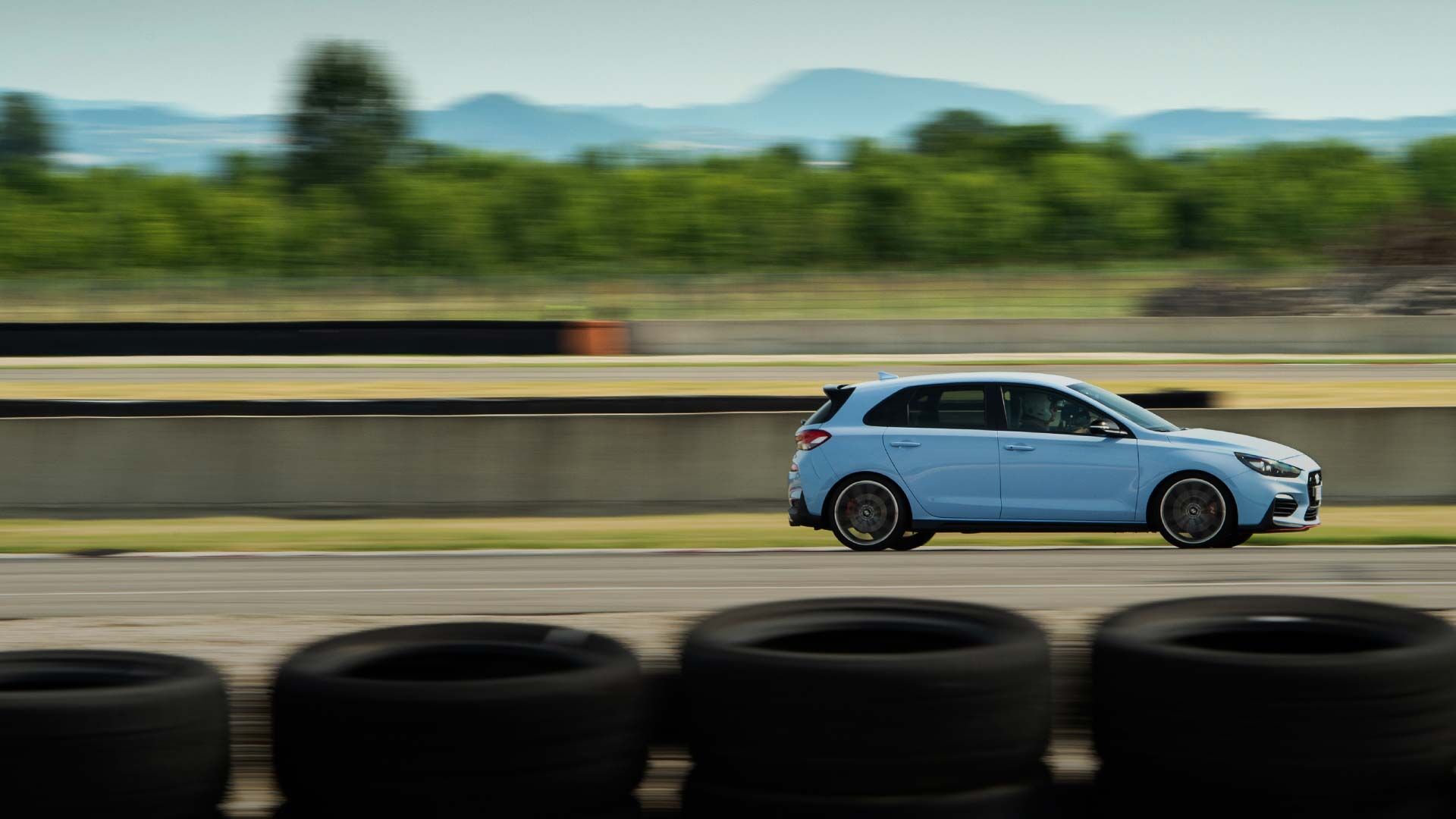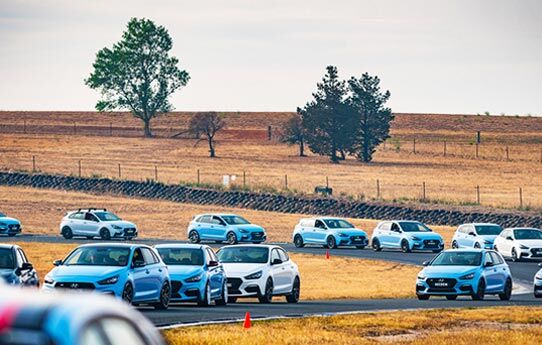29 April 2020
Interested in driving a performance car and want to boost your performance on the track? You probably know the driving basics, but here are a few tips to get the most out of your high-performance car.
Fast Starts

When you’re on the racetrack, a fast start can be the deciding factor of a race — you want to reach the highest speed possible, in the shortest time possible. To do that, it’s important to accelerate strongly but evenly. But many performance cars have a manual transmission, which can make a fast and smooth start a bit of a challenge.
Luckily, many performance cars like Hyundai N’s performance cars have a launch control feature that lets the driver get the fastest start possible, like a professional race car driver.
Hyundai N’s launch control system is integrated into all N models, controlling torque from a standing start and giving the driver maximum traction thanks to an electronic accelerator that prevents slippage, engine failure, and gearbox problems.

Look Ahead
A common mistake on the track is focusing on the car in front of you. It might seem natural, but by doing that you end up just following the car. Instead, look ahead and focus on where you want your car to go.
This way, your hands and feet will subconsciously drive in the right direction and help you drive the car balanced and smoothly. And this in turn results in better grip.

Steering
It’s often taught that your hands should be at 10 and 2 on the steering wheel, but you get more control and grip by placing your hands at 9 and 3 instead. This is especially true when driving on a racetrack at high speeds and driving through sharp corners.
Even while cornering, it’s recommended to keep your hands at 9 and 3. So instead of sliding your hands around the wheel when turning, you should keep your hands in the same position even if your arms end up crossing. It’s not very intuitive, but keeping your hands in one position helps you find the straight-ahead steering position quickly, which is crucial when cornering fast like a racing car.
Besides hand position, you want to make sure that you’re pulling the steering wheel down with one hand, rather than pushing it up. This ensures that you have more agility and control when steering.
And don’t forget to hold the steering wheel lightly. While you need to have good grip and control, you won’t be able to feel the wheel’s feedback if you hold on too tight. So it’s best to have a light but firm grip on the steering wheel.

Balancing
To reach maximum performance on the racetrack, balancing the throttle and your car is essential. When you accelerate, all the weight of your car moves to the back of the car, and when you brake all the weight goes to the front. The uneven weight distribution causes your car to lose grip and traction as there is too much pressure on certain tyres and not enough pressure on the other tyres.
So instead of accelerating hastily or braking abruptly, it’s important to balance the throttle to balance the car for smooth acceleration and braking.
Shifting Gears
Many high-performance cars have a manual transmission. So if you’re interested in learning how to drive a performance car, you have to learn how to properly shift gears and how to reach the best acceleration for your car.
Shifting gears at just the right time means you get maximum torque during acceleration. However, every car is different and has varying torque curves and gear ratios, making it more difficult to find the right moment to shift gears.
To actually shift gears, you need to release the gas pedal and then press on the clutch. Then after changing the gear, carefully let go of the clutch while pressing down on the gas pedal. It’ll probably take some practice before you find the right timing to upshift and downshift, so be sure to do some practice rounds. To give you a rough idea, it’s generally recommended to upshift at around 2,500 to 3,000 RPMs and downshift at around 1,000 RPMs. The RPMs are shown on your tachometer, and after a few practice rounds you’ll be able to find the optimal moment to shift.
Fortunately, some performance cars like Hyundai N cars have an automatic rev-matching feature that gives you a smooth transition between gears. Hyundai N’s rev-matching feature automatically matches the speed of the engine with the optimal gear speed to stabilize the performance car while braking, for smooth and fast downshifting.

Cornering
Part of the fun of driving a performance car is cornering. Here are a few things to keep in mind in order to master it.
Always remember to brake and downshift before a turn to have maximum torque when exiting the corner. You should brake and downshift before the corner — not within the corner — to keep the car’s balance before you go into the turn.
As you corner, look where you’re going and where you want the car to go. And instead of hugging the corner, start at the outside of the track and flatten out the corner. This way, you maintain as much speed as possible while minimizing steering. Then once you’re coming out of the corner, you can accelerate aggressively yet smoothly to regain speed.

An electronic limited slip differential (e-LSD) helps enhance a car’s cornering abilities by ensuring stability during hard braking and acceleration.
Hyundai N specifically designed and engineered its N Corner Carving Differential to maximize Hyundai N cars’ cornering abilities. The Corner Carving Differential is an e-LSD that maximizes greatest cornering action by enhancing grip for maximum power on the road and minimal wheel slip and understeering.

Get the Most Out of Your Performance Car
Now you’re ready to take your performance car on the track and try out these driving tips for yourself! Every car may be different, but with this you’ll be able to improve your performance and also enjoy your performance car to the fullest.







